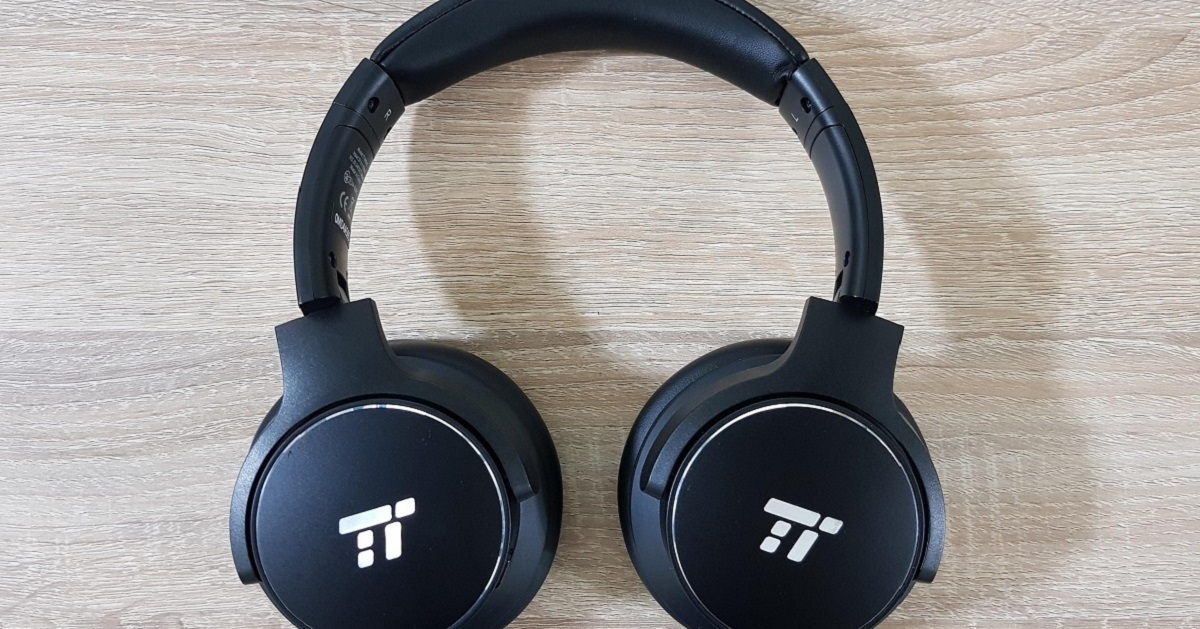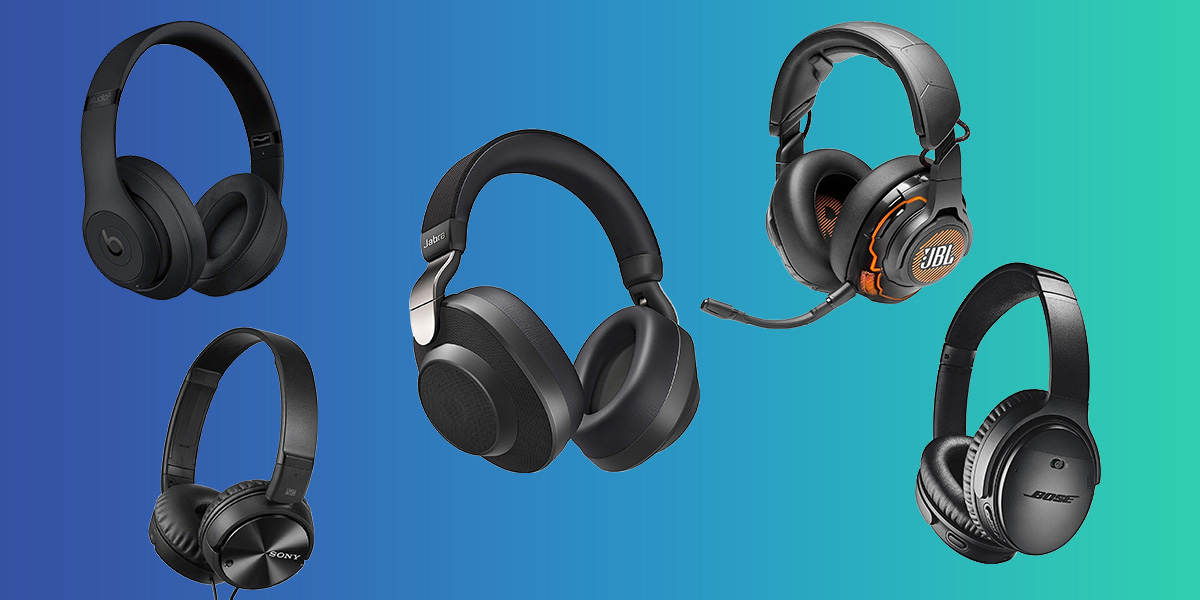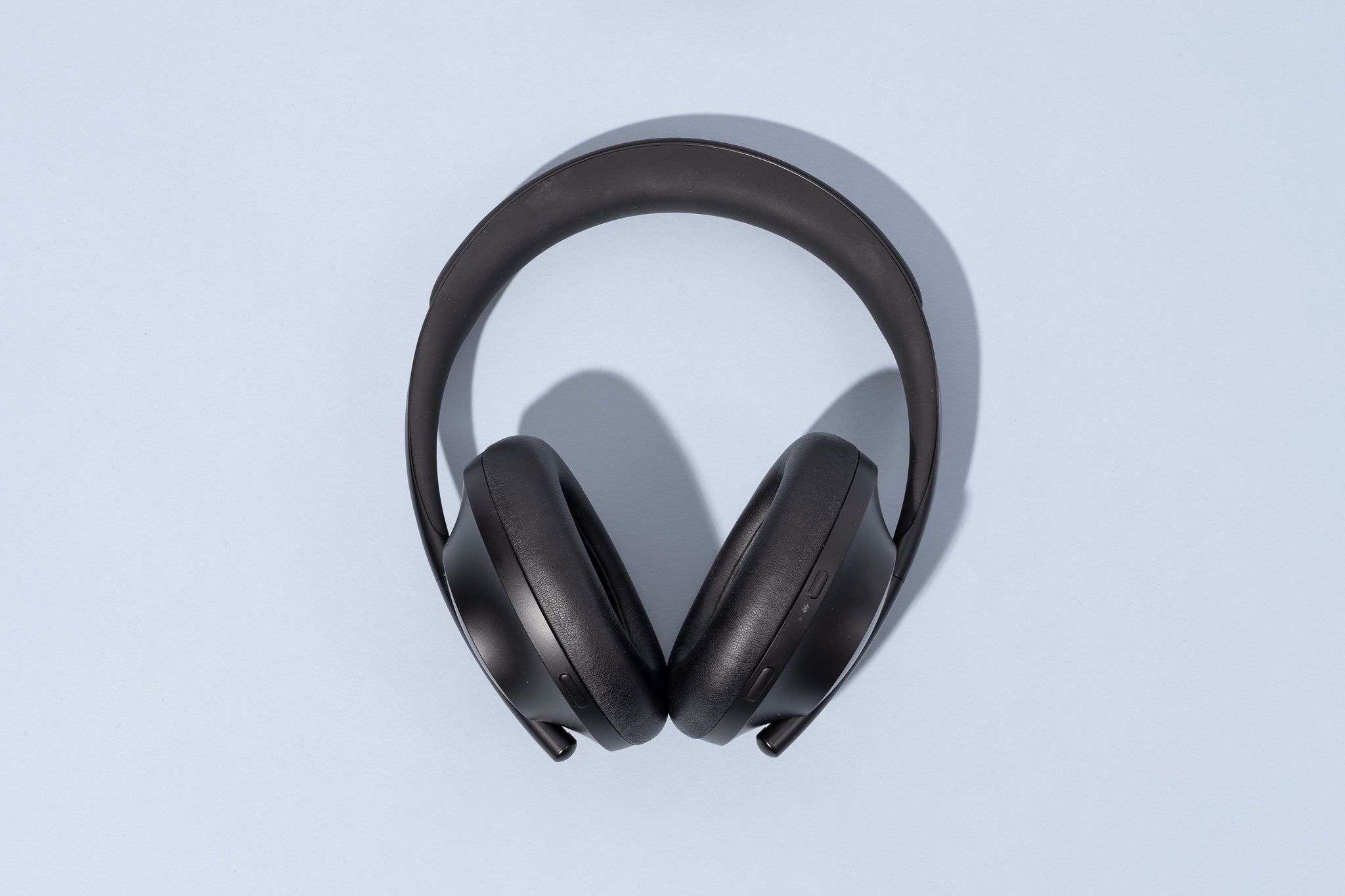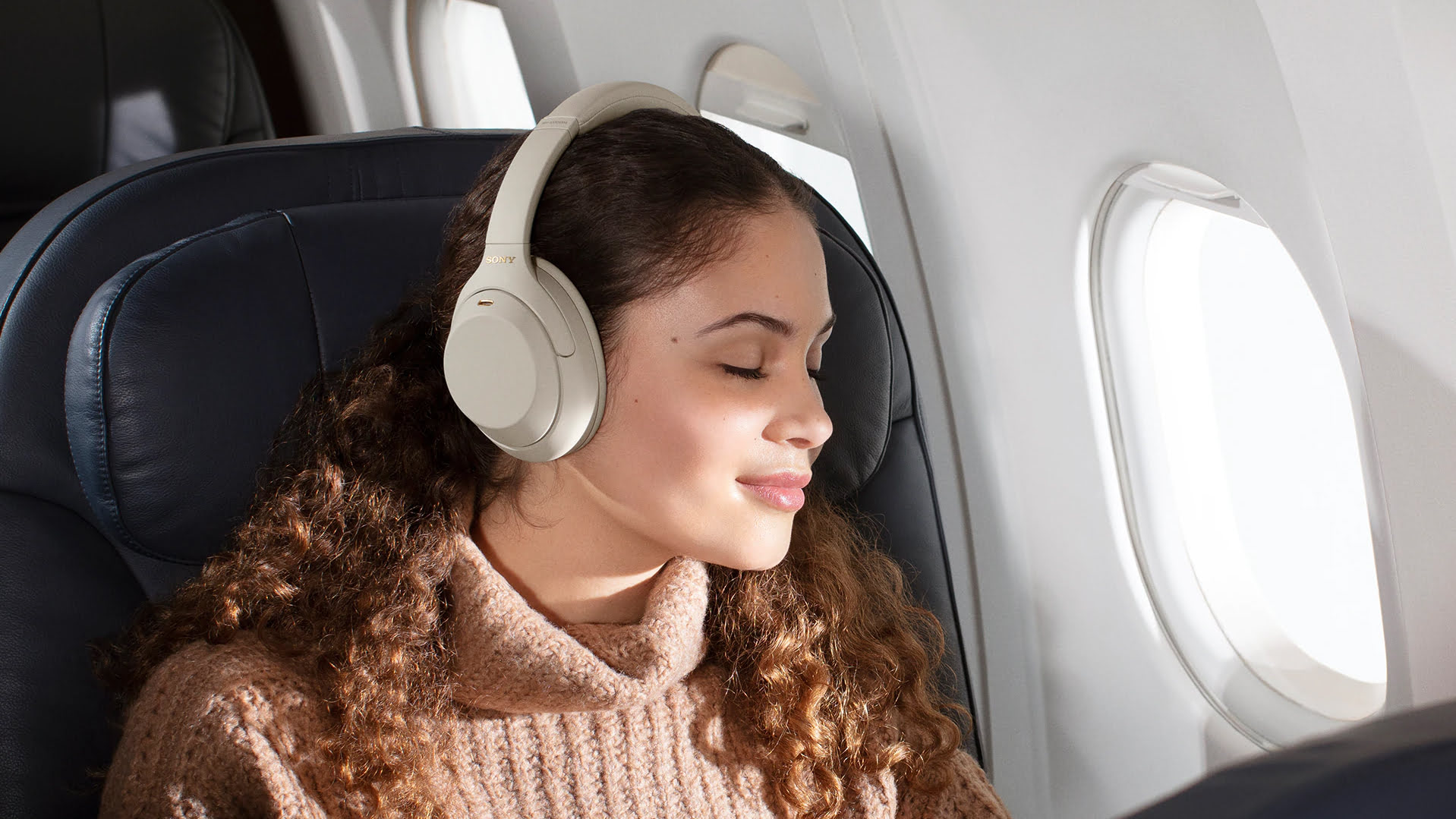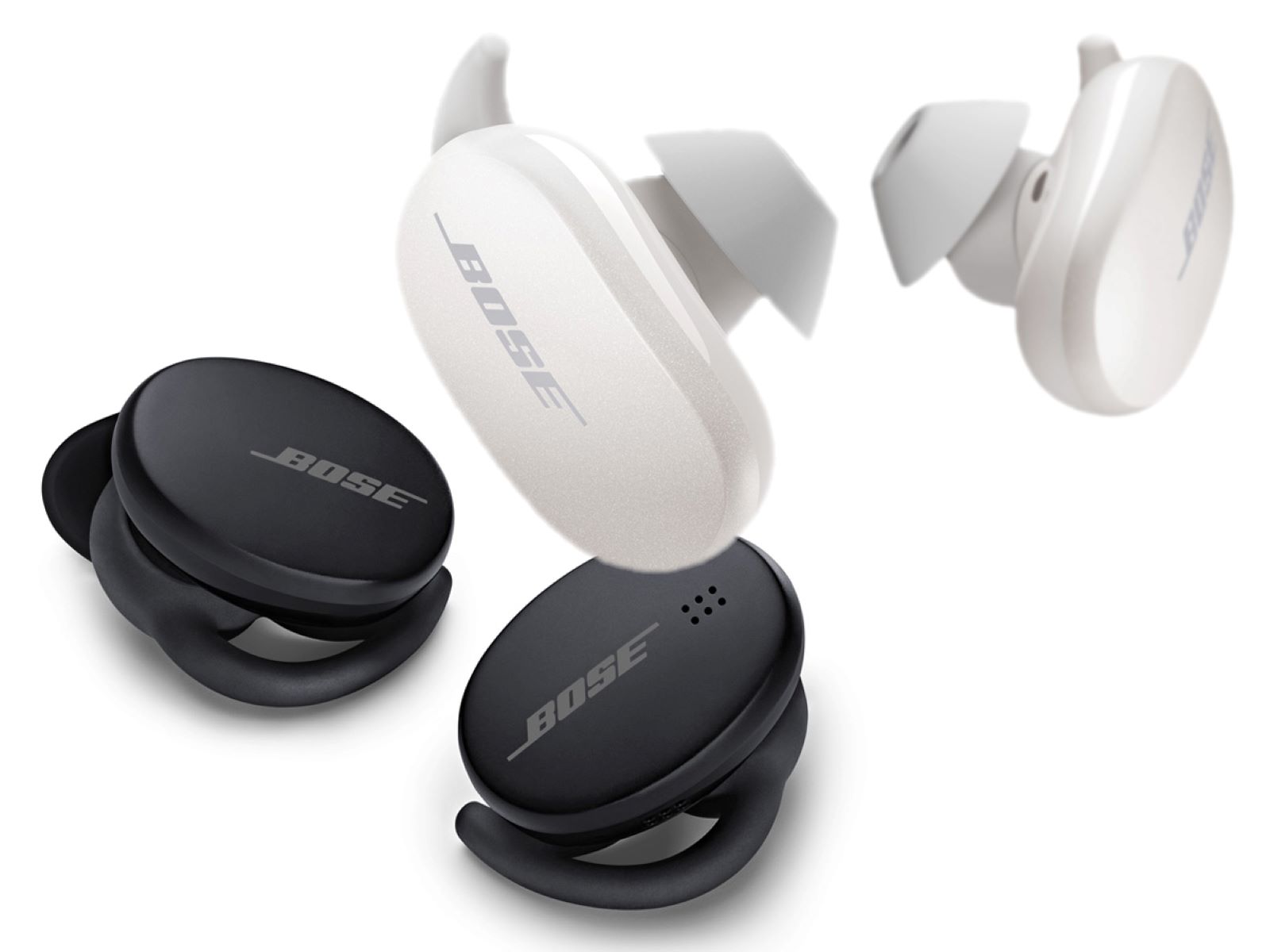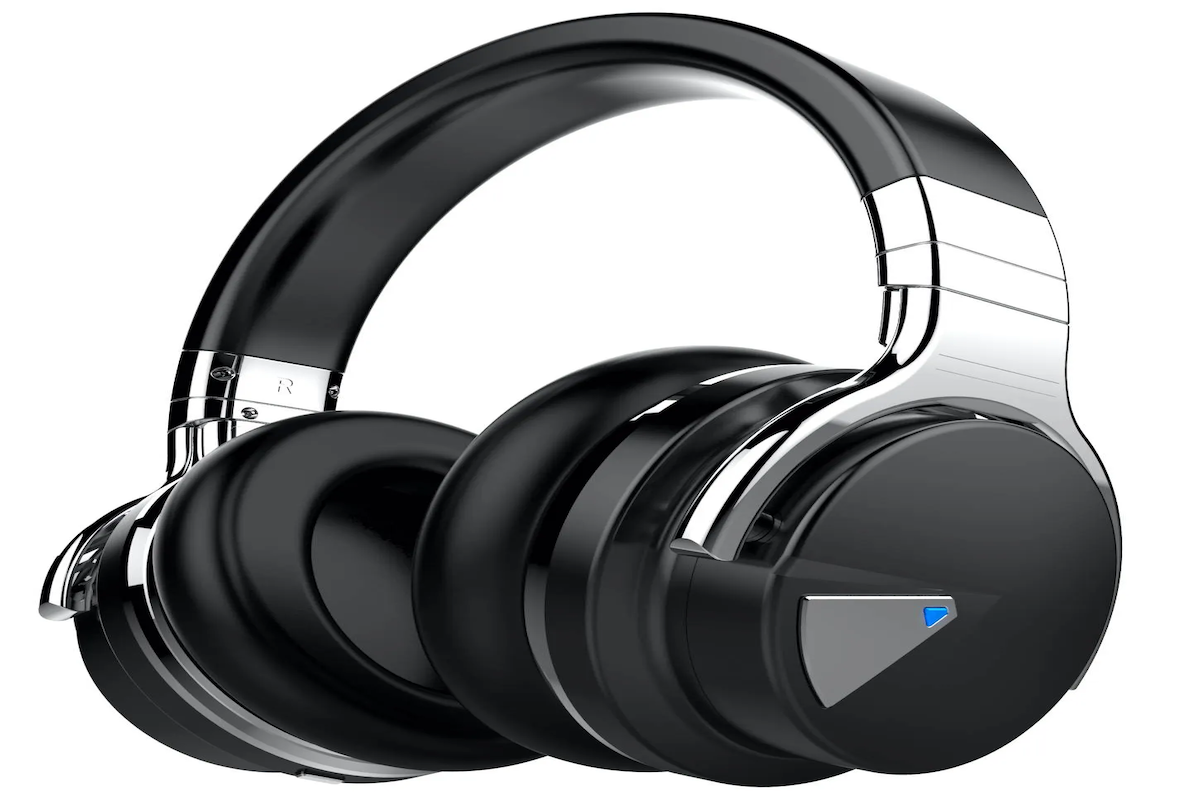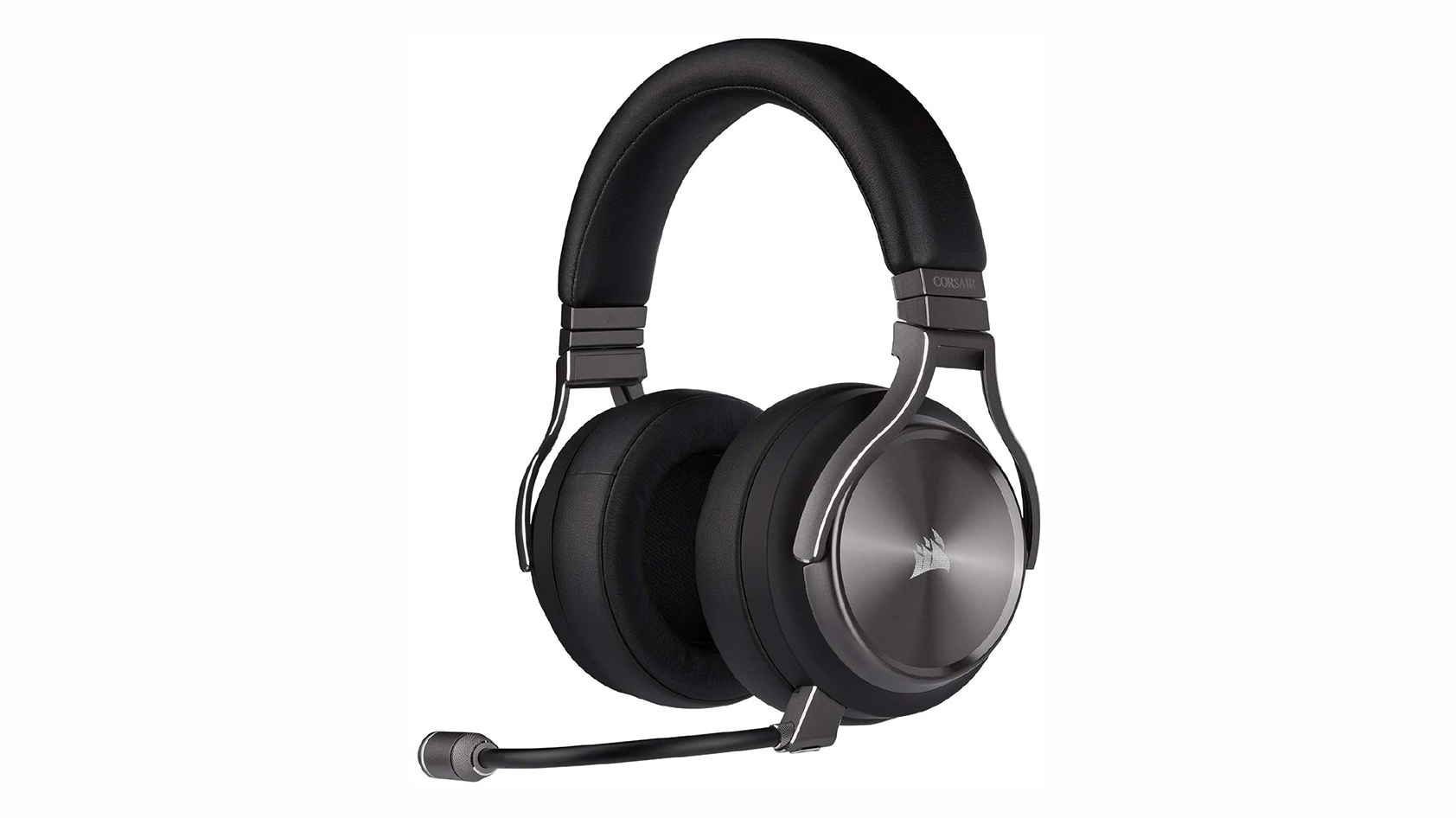Introduction
Welcome to the world of active noise cancellation, a technology that has revolutionized the way we experience sound. Whether you’re traveling on a noisy airplane, working in a bustling office, or simply looking for some peace and quiet in your own home, active noise cancellation can be a game-changer. In this article, we will explore what active noise cancellation is, how it works, and the benefits and limitations of this innovative technology.
Active noise cancellation is a method used to reduce or eliminate unwanted ambient sounds by creating sound waves that cancel out the incoming noise. Unlike passive noise cancellation, which relies on physical barriers or materials to block sound waves, active noise cancellation actively creates an opposing sound wave to cancel out the noise.
The advanced technology behind active noise cancellation allows you to immerse yourself in your own personal soundscape, free from distractions. By intelligently analyzing the surrounding sounds, active noise cancellation devices are able to generate an “anti-noise” signal that counteracts the incoming noise. This results in a significant reduction in the overall noise level, allowing you to enjoy your music, movies, or conversations with greater clarity and without the need to raise the volume excessively.
The benefits of active noise cancellation are numerous. Firstly, it enhances the quality of sound reproduction by minimizing background noise, improving the overall listening experience. Whether you’re a music enthusiast or a frequent traveler, active noise cancellation can help you fully appreciate your favorite tunes or have quiet and focused conversations.
Another advantage of active noise cancellation is its ability to reduce the impact of persistent or repetitive noises, such as engine drones or office chatter. This can be particularly beneficial for individuals who work in noisy environments, as it can help improve concentration and productivity. Active noise cancellation can also be beneficial in promoting relaxation and reducing stress, as it creates a more tranquil environment wherever you are.
However, it’s important to note that active noise cancellation also has its limitations. While it can effectively reduce steady, low-frequency background noises, it may have difficulty eliminating sudden or sharp sounds, such as a loud clap or a door slam. Additionally, active noise cancellation can introduce a subtle audible hiss, although newer technologies have minimized this issue.
Overall, active noise cancellation is a remarkable technology that has become increasingly popular in recent years. From noise-canceling headphones to smart devices and even car systems, the applications of active noise cancellation are vast and continue to evolve. Whether you’re a frequent traveler, a busy professional, or simply seeking a moments of peace and quiet, active noise cancellation can greatly enhance your auditory experience and help you find your own sonic sanctuary.
What is Active Noise Cancellation?
Active noise cancellation is a technology designed to reduce or eliminate unwanted background noise by creating sound waves that cancel out the incoming noise. Unlike passive noise cancellation, which relies on physical barriers or materials to block sound waves, active noise cancellation actively generates an “anti-noise” signal to counteract the noise.
At its core, active noise cancellation aims to create a more immersive and enjoyable listening experience by minimizing the impact of external sounds. The technology is commonly employed in headphones, earphones, and even some car audio systems, allowing users to enjoy their audio content without being disturbed by surrounding noise.
So how does active noise cancellation actually work? In active noise cancellation devices, there are built-in microphones that pick up surrounding sounds. These microphones analyze the sound waves and identify unwanted noises, such as the hum of an airplane engine or the chattering of people in a crowded cafe.
Once the unwanted noise is detected, the active noise cancellation system generates a corresponding sound wave with the opposite frequency and amplitude. This generated sound wave is then combined with the original sound waves, effectively canceling out the unwanted noise. The result is a more clear and immersive audio experience, where the desired sound is emphasized, and the background noise is significantly reduced or eliminated.
It’s important to note that active noise cancellation primarily targets low-frequency sounds, such as engine rumble or ambient noise. These sounds are typically more constant and easier to predict and cancel out. However, active noise cancellation may have limitations in eliminating sudden or impulsive sounds, such as a door slamming or a loud siren, as these sounds have a different nature and are more challenging to cancel effectively.
In recent years, active noise cancellation technology has advanced significantly, allowing for more precise noise canceling and improved sound quality. Some devices now have multiple microphones strategically placed to capture sounds from different directions, enhancing the accuracy of noise detection and cancellation.
Overall, active noise cancellation is a fascinating technology that has become increasingly prevalent in our daily lives. From providing a more enjoyable audio experience during travel to creating a focused work environment in noisy settings, active noise cancellation is a valuable tool for those who desire a quieter and more immersive world of sound.
How Does Active Noise Cancellation Work?
Active noise cancellation is a complex technology that utilizes a combination of hardware and software to reduce or eliminate unwanted background noise. The process involves four main steps: capturing the sound, analyzing the sound, creating an anti-noise signal, and combining the anti-noise signal with the original sound.
The first step in active noise cancellation is capturing the sound. Active noise cancellation devices, such as headphones or earphones, are equipped with small built-in microphones that pick up the surrounding sounds. These microphones capture the noise from the environment, including low-frequency sounds like the rumble of a plane or the hum of traffic.
Once the sound is captured, it is sent to the device’s built-in processor for analysis. The processor examines the incoming sound waves and identifies the unwanted noise that needs to be canceled out. This analysis is crucial in determining the specific characteristics of the noise, such as frequency and amplitude.
After analyzing the sound, the processor generates an anti-noise signal that is the exact opposite of the unwanted noise. This signal is created by manipulating the frequency and amplitude of the generated sound waves. By producing a sound wave that is 180 degrees out of phase with the unwanted noise, the anti-noise signal effectively cancels out the noise when combined with the original sound.
The final step is to combine the anti-noise signal with the original sound. The anti-noise signal is generated by the device’s built-in speaker or driver. When the anti-noise signal is played at the same time as the original sound, the two sound waves interfere with each other. This interference results in the cancellation of the unwanted noise, leaving behind only the desired sound.
It is important to note that active noise cancellation is most effective against constant or repetitive sounds, especially low-frequency ones. This is because these sounds are easier to predict and cancel out. Sharp, sudden noises, on the other hand, are more challenging to eliminate due to their unpredictable nature.
In recent years, advancements in active noise cancellation technology have led to the development of hybrid systems that combine both active and passive noise cancellation techniques. These systems use physical barriers, such as specialized materials or ear cup design, in conjunction with active noise cancellation to provide even greater noise reduction.
Overall, active noise cancellation is a remarkable technology that allows us to enjoy a more immersive and uninterrupted audio experience. By capturing, analyzing, and generating an anti-noise signal to cancel out unwanted noise, active noise cancellation devices provide us with a quieter and more enjoyable sonic environment.
Benefits of Active Noise Cancellation
Active noise cancellation offers a range of benefits for individuals seeking a more immersive listening experience or a quieter environment. Here are some of the key advantages of using active noise cancellation technology:
- Reduced Background Noise: The primary benefit of active noise cancellation is its ability to significantly reduce background noise. Whether you’re on a bustling city street, in a crowded office, or traveling on a noisy airplane, active noise cancellation can help create a more peaceful and focused environment by minimizing distractions.
- Enhanced Audio Quality: By reducing the impact of surrounding noise, active noise cancellation allows you to better hear and appreciate the audio content you’re consuming. Whether you’re listening to music, watching a movie, or engaged in a phone call, active noise cancellation enhances the clarity and richness of the sound, making your listening experience more enjoyable.
- Improved Concentration and Productivity: In noisy work environments, active noise cancellation can be a game-changer. By muffling or eliminating background noise, it helps improve concentration and focus, allowing you to be more productive and efficient. This is particularly beneficial for those who work in open-plan offices or other shared workspaces.
- Reduced Ear Fatigue: Continuous exposure to loud or unwanted noise can lead to ear fatigue. Active noise cancellation helps to minimize the volume of background noise, allowing you to listen to audio content at lower volumes without sacrificing clarity. This can be especially important for those who spend extended periods wearing headphones or earphones.
- Enhanced Travel Experience: Traveling can often involve enduring noisy environments, such as airports, trains, or buses. Active noise cancellation can make your travel experience more enjoyable by reducing the impact of engine noise, conversations, or other disturbances. You can immerse yourself in your favorite music or simply enjoy moments of tranquility during your journey.
- Promotes Relaxation and Stress Reduction: Active noise cancellation can create a more calm and peaceful ambiance, making it easier to relax and unwind. Whether you’re at home, in a coffee shop, or at a hotel, active noise cancellation allows you to create your own soothing environment, reducing stress and promoting a sense of tranquility.
It’s worth noting that the benefits of active noise cancellation can vary depending on the quality and effectiveness of the device or system being used. High-quality headphones or earphones with advanced active noise cancellation technology typically offer superior noise reduction and audio enhancement capabilities.
Overall, active noise cancellation technology provides numerous advantages, allowing for a more enjoyable, focused, and immersive listening experience. Whether you’re a music lover, a frequent traveler, or simply seeking a quieter environment, active noise cancellation can greatly enhance the way you experience sound in your everyday life.
Differences Between Active and Passive Noise Cancellation
When it comes to reducing or eliminating unwanted background noise, two main techniques come into play: active noise cancellation and passive noise cancellation. While they both aim to achieve a quieter listening experience, there are significant differences between the two approaches. Here’s a breakdown of the disparities between active and passive noise cancellation:
Active Noise Cancellation:
Active noise cancellation involves using advanced technology and electronics to actively counteract incoming noise. It relies on three main components: microphones, a digital signal processor, and a speaker or driver. The process begins by capturing the surrounding sound through the microphones. The signal processor then analyzes the sound waves to identify and generate an “anti-noise” signal that is opposite in phase to the unwanted noise. This anti-noise signal is produced by the speaker or driver and combined with the original sound, effectively canceling out the undesired noise.
The key characteristic of active noise cancellation is its ability to analyze and counteract specific frequencies of noise. It is most effective against continuous or repetitive sounds, such as the hum of an airplane engine or the rumble of a train. Active noise cancellation can be found in devices like noise-canceling headphones or earphones, and it requires a power source to operate.
Passive Noise Cancellation:
Passive noise cancellation, on the other hand, does not rely on electronics or active sound manipulation. It is achieved through the physical design and properties of the materials used in the audio device. Passive noise cancellation isolates the ear from external noise by creating a physical barrier between the sound source and the listener’s ears.
The most common form of passive noise cancellation is the use of specialized materials and construction techniques in headphones or earphones. These materials, such as memory foam or silicone, create a tight seal around the ear, preventing external noise from entering. The ear cups or ear tips act as a physical barrier, reducing the overall volume of ambient noise. Passive noise cancellation is effective against a wide range of noise frequencies and does not require any power source.
Differences and Benefits:
While both active and passive noise cancellation techniques aim to reduce unwanted noise, there are notable differences between the two:
- Active noise cancellation: Active noise cancellation can actively counteract specific frequencies of noise, making it particularly effective against constant or repetitive sounds. It offers a higher degree of noise reduction and is ideal for situations where there is a consistent background noise source.
- Passive noise cancellation: Passive noise cancellation provides a physical barrier between the ear and the surrounding noise, reducing noise across a wide range of frequencies. It is effective in a variety of settings and does not rely on electronics or power sources.
- Combining the two: Some devices employ a combination of active and passive noise cancellation techniques. This hybrid approach maximizes noise reduction by using both the physical barrier of passive noise cancellation and the active sound manipulation of active noise cancellation.
When choosing between active and passive noise cancellation, consider the specific environment and noise sources you encounter. Active noise cancellation is often favored in louder environments or during travel, where ambient noise is continuous and predictable. Passive noise cancellation, on the other hand, is suitable for a wide range of environments and is beneficial in isolating the listener from external noise without the need for electronics.
Ultimately, the choice between active and passive noise cancellation depends on your personal preferences, the level of noise reduction desired, and the specific situations in which you will be using the device.
Common Uses for Active Noise Cancellation
Active noise cancellation technology has gained popularity in various applications, providing users with a more immersive and uninterrupted listening experience. Here are some of the common uses and scenarios where active noise cancellation can make a significant difference:
- Travel: Whether you’re flying on an airplane, riding a train, or taking a long road trip, active noise cancellation can greatly enhance your travel experience. By reducing the noise from engines, wind, and other passengers, active noise cancellation allows you to enjoy your favorite music, podcasts, or movies without the constant background noise. It creates a more peaceful and enjoyable environment, allowing you to relax and unwind during your journey.
- Office and Work Environments: Many professionals work in busy and noisy office environments, where distractions can hinder productivity and concentration. Active noise cancellation can help create a more focused and productive workspace by minimizing background noise, such as conversations, office equipment sounds, or outside traffic. It enables you to concentrate better on your tasks and engage in phone or video conferences without being disturbed by surrounding noise.
- Public Spaces and Cafes: Finding a quiet corner in a bustling coffee shop or public space can be a challenge. Active noise cancellation allows you to create your own bubble of tranquility, reducing the impact of conversations, music, and other ambient noise. Whether you’re studying, reading, or working on a project, active noise cancellation can help you maintain your focus and create a more peaceful environment in these bustling areas.
- Noisy Gyms and Fitness Centers: For fitness enthusiasts who prefer to workout in a gym or fitness center, active noise cancellation can be a game-changer. It helps to minimize the noise from loud music, clanking weights, and chattering gym-goers, allowing you to stay focused on your workout routine. Active noise cancellation can be particularly beneficial during high-intensity workouts or when performing exercises that require concentration and focus.
- Concerts and Music Events: Attending live concerts and music events can be an exhilarating experience, but the loud and intense sound levels can also be overwhelming at times. Active noise cancellation devices, such as earphones or headphones, can help protect your hearing without sacrificing the audio quality. They reduce the impact of the loud music and crowd noise, allowing you to enjoy the performance while safeguarding your ears from potential damage.
- Home Relaxation and Meditation: At home, creating a peaceful and quiet space for relaxation, meditation, or sleep is essential. Active noise cancellation can help you create a serene environment by minimizing the noise from household activities, street traffic, or neighboring sounds. Whether you’re practicing yoga, meditating, or simply enjoying some quiet time, active noise cancellation can enhance the tranquility and help you unwind more effectively.
These are just a few examples of the common uses for active noise cancellation technology. As the technology continues to advance and become more accessible, the applications for active noise cancellation will likely expand further, providing even more opportunities to experience a quieter, more immersive world of sound.
Limitations of Active Noise Cancellation
While active noise cancellation is a remarkable technology that offers numerous benefits, it does have some limitations to consider. Understanding these limitations can help manage expectations and effectively utilize active noise cancellation devices. Here are some of the key limitations of active noise cancellation:
- Effectiveness against Sudden or Impulsive Noises: Active noise cancellation is most effective against continuous, low-frequency background noises. However, it may struggle to cancel out sudden or impulsive sounds such as a door slam or a loud clap. These types of sounds have different characteristics and are more challenging to predict and counteract in real-time.
- Subtle Hiss or White Noise: Active noise cancellation devices can introduce a subtle hiss or white noise as a byproduct of the anti-noise generation process. While newer technologies have minimized this issue, it can still be noticeable in certain circumstances, especially during quiet passages of music or when the noise cancellation feature is activated without any audio playing.
- Dependency on Power Source: Active noise cancellation devices require a power source to operate. This means that they rely on batteries, rechargeable cells, or a continuous power supply, depending on the device’s design. Users must ensure that the device is adequately powered to maintain the active noise cancellation feature.
- Limited Performance in Certain Environments: Active noise cancellation is most effective in environments with predictable background noise patterns, such as the steady hum of an airplane or the constant noise in an office. In environments with irregular or rapidly changing noise, such as a crowded street or a busy restaurant, active noise cancellation may have more difficulty effectively canceling out unwanted sounds.
- Sound Quality Impact: While active noise cancellation can enhance the clarity of desired sounds, it may also have a minor impact on overall sound quality. Some users may notice a slight alteration in the audio reproduction due to the interference caused by the cancellation process. However, the impact is generally minimal and often outweighed by the benefits of reduced background noise.
It is important to keep in mind that the limitations of active noise cancellation can vary depending on the quality and effectiveness of the device or system being used. Advanced active noise cancellation technologies continually strive to overcome these limitations and deliver an improved user experience.
When considering using active noise cancellation devices, it is essential to assess your specific needs and the environmental conditions in which you intend to use the technology. Understanding the limitations and managing expectations effectively will help you make informed decisions and fully leverage the benefits that active noise cancellation provides.
Choosing the Right Active Noise Cancellation Device
When it comes to selecting an active noise cancellation (ANC) device, there are several factors to consider to ensure you choose the right one for your needs. From headphones to earphones, here are some key considerations to keep in mind:
- Noise Reduction Capability: Different ANC devices offer varying levels of noise reduction. Consider the intended use and environmental noise levels you anticipate encountering. Look for devices that provide a high level of noise reduction across a wide range of frequencies to suit your specific needs.
- Audio Quality: Assess the audio quality of the ANC device. Look for devices that offer clear, balanced sound reproduction, as well as good bass response and overall frequency range. Ensure that the ANC technology does not negatively impact the audio quality and that it enhances your listening experience rather than diminishing it.
- Comfort and Fit: Consider the comfort and fit of the ANC device, especially if you plan to wear it for extended periods. Look for adjustable headbands, cushioned ear cups, and ear tips that provide a secure and comfortable fit. Customizable options are beneficial for achieving an optimal fit tailored to your individual preferences.
- Battery Life: ANC devices rely on power sources, so it’s crucial to assess the device’s battery life. Look for devices that offer long-lasting battery performance, especially if you plan to use them during long flights or commutes. Also, consider the charging options available, such as USB charging or wireless charging.
- Connectivity Options: Evaluate the connectivity options offered by the ANC device. Wireless options like Bluetooth allow for greater convenience and freedom of movement, but consider the device’s compatibility with your preferred devices. Wired options may provide a more stable connection and can be desirable for those who prioritize audio latency or want to connect to a wider range of devices.
- Additional Features: Some ANC devices offer extra features to enhance the user experience. These can include built-in microphones for hands-free calling, touch or physical controls for easy operation, or smart features like voice assistants or integration with companion apps. Decide which additional features are important to you and choose a device that aligns with your preferences.
- Budget: Determine your budget range for an ANC device. Consider the trade-off between price and features when making your decision. It’s important to find a balance that suits your requirements while considering the long-term value and quality of the device.
Reading reviews and comparing different ANC devices can provide valuable insights into the overall performance, user experiences, and specific features of each device. It’s also beneficial to try devices in-person whenever possible to assess the comfort, fit, and sound quality firsthand before making a final decision.
By considering factors such as noise reduction capability, audio quality, comfort, battery life, connectivity options, additional features, and budget, you can make a well-informed decision and choose the right active noise cancellation device that suits your lifestyle and listening preferences.
Conclusion
Active noise cancellation technology has revolutionized the way we experience sound, allowing us to enjoy audio content in a more immersive and distraction-free manner. By creating sound waves that counteract unwanted background noise, active noise cancellation devices provide a valuable tool for various scenarios.
From travel to the office, public spaces to personal relaxation, active noise cancellation offers a range of benefits. It reduces background noise, enhances audio quality, improves concentration and productivity, reduces ear fatigue, and promotes relaxation and stress reduction. Whether you’re a frequent traveler, a busy professional, or someone looking for a moment of tranquility, active noise cancellation can significantly enhance your auditory experience and provide a more peaceful listening environment.
However, it’s important to keep in mind the limitations of active noise cancellation technology. Its effectiveness may vary depending on the nature and intensity of the noise, and it may have difficulty canceling sudden or impulsive sounds. The presence of subtle hissing or white noise and the need for a power source are also factors to consider.
When choosing an active noise cancellation device, factors such as noise reduction capability, audio quality, comfort and fit, battery life, connectivity options, additional features, and budget should all be taken into consideration. Reading reviews, comparing different devices, and trying them out firsthand can help you make an informed decision and find the device that best suits your needs.
As active noise cancellation technology continues to advance, we can expect even greater innovation and refinement in delivering a more immersive and personalized auditory experience. The applications of active noise cancellation are vast and ever-expanding, providing us with the opportunity to enjoy our audio in a more enjoyable and undisturbed way.
So, whether you’re using active noise cancellation for leisure, work, or relaxation, embrace the benefits it offers and immerse yourself in a world of sound that is tailor-made for your enjoyment.









